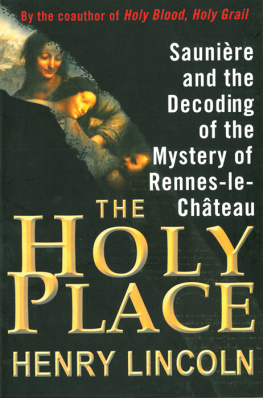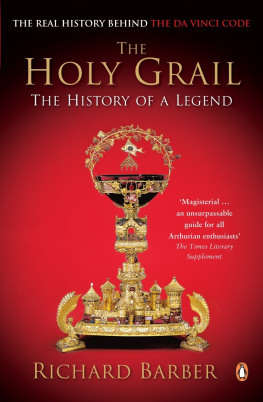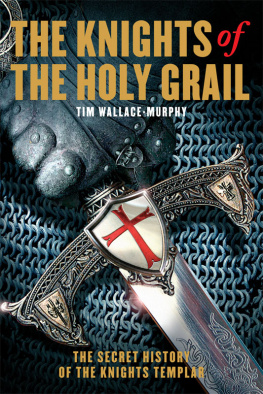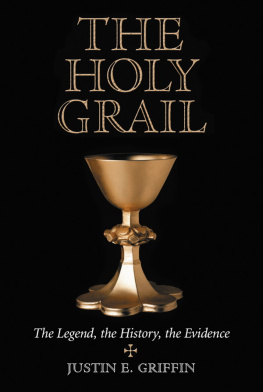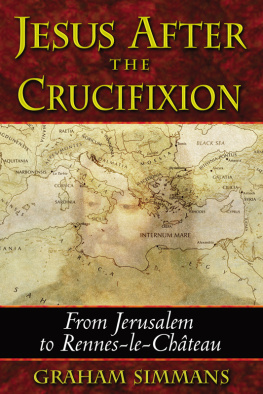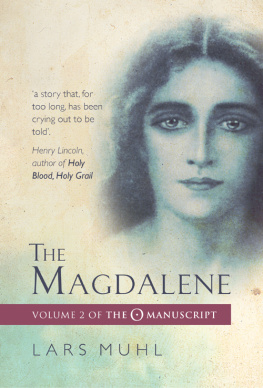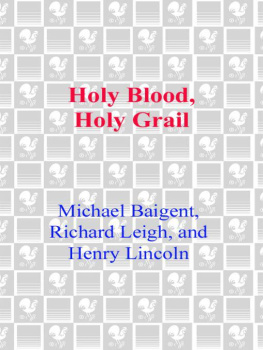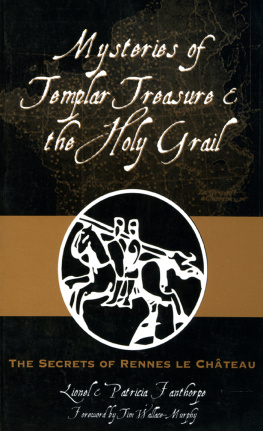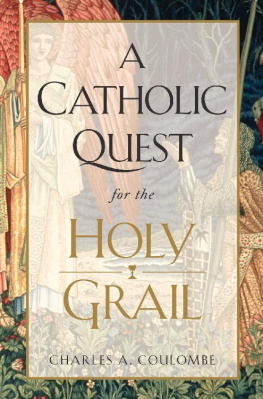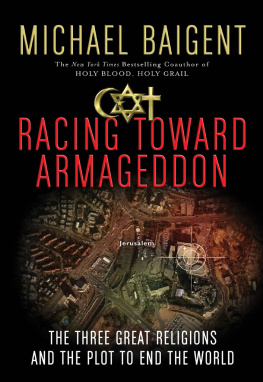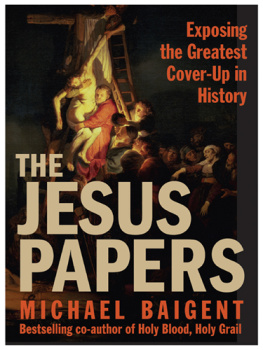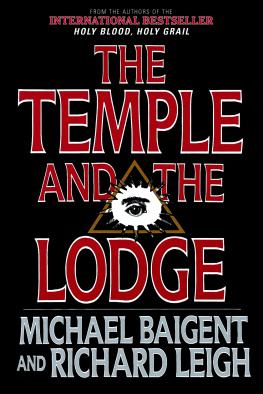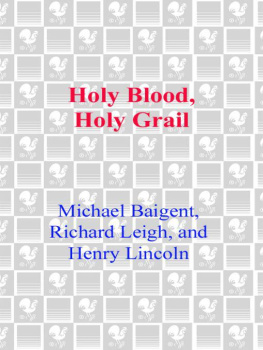By the same author
THE HOLY BLOOD AND THE HOLY GRAIL
(Published in the United States as:
HOLY BLOOD, HOLY GRAIL)
THE MESSIANIC LEGACY
(each jointly with Michael Baigent and Richard Leigh)
Rennes-le-Chateau.
For my grandchildren who have yet to visit the place.
And especially for J who would dearly love to visit somewhere else!
Copyright 1991, 2011 by Henry Lincoln
All Rights Reserved. No part of this book may be reproduced in any manner without the express written consent of the publisher, except in the case of brief excerpts in critical reviews or articles. All inquiries should be addressed to Arcade Publishing, 307 West 36th Street, 11th Floor, New York, NY 10018.
Arcade Publishing books may be purchased in bulk at special discounts for sales promotion, corporate gifts, fund-raising, or educational purposes. Special editions can also be created to specifications. For details, contact the Special Sales Department, Arcade Publishing, 307 West 36th Street, 11th Floor, New York, NY 10018 or .
Arcade Publishing is a registered trademark of Skyhorse Publishing, Inc., a Delaware corporation.
Visit our website at www.arcadepub.com.
10 9 8 7 6 5 4 3 2 1
Library of Congress Cataloging-in-Publication Data is available on file.
ISBN: 978-1-61145-464-2
Contents
Preface
All my life I had envied Howard Carter his glorious moment when he broke through into the Tomb of King Tutankhamen. Lord Carnarvon asked him: Can you see anything? - and Carter, his eyes dazzled by that first glimpse of treasure, replied: Yes wonderful things!
I no longer envy that incredible discovery. In my turn I have caught sight of unexpected wonders, and more remain to be found. I have entered a treasure chamber and begun to see what lies within. But I suspect that I have glimpsed only a small part of the treasure. In this book I hope to open a door to enable readers to make fresh discoveries for themselves. To experience, as I have done, that overwhelming shock of excitement at knowing that ones eyes are the first to see a long-lost marvel.
I have taken the first few steps along a new-old road. I cannot yet see where this road may lead, but already I know that we have much still to learn about the thinking and capabilities of our remote ancestors. This book is a sign-post along the way back to a lost understanding. The journey thus far has been long and not without detours and stumbling blocks. It was not a journey I had intended to make.
H.L.
1
First Encounters
The most casual and mundane of actions can sometimes change the course of ones life. So it was for me in 1969 when idly I spun a pavement bookstand outside a papershop in a small provincial French town. I was looking for some light and entertaining reading, something undemanding to fill a holiday hour. I reached out and took from the rack Le Trsor Maudit (The Accursed Treasure). As I handed over the few francs for the paperback, I had no inkling that I had just purchased twenty years of excitement, mystery and discovery. As haphazardly as a roulette wheel the spinning bookstand had presented me with a winner.
The book proved ideal for my purpose. It was an intriguing buried treasure mystery. The story concerned a tiny village - Rennes-le-Chteau - set on a mountain top in the foothills of the Pyrenees. At the end of the nineteenth century, the parish priest had discovered some mysterious parchments in his church. They had, it seemed, changed the life of the priest from church-mouse poverty to Croesus riches. They had led him, the book suggested, to a lost, an accursed, treasure. The accursed element was somewhat vague. There had been a few apparently unexplained deaths of people associated (more or less) with the story. The treasure itself seemed equally elusive. The book could give no firm details of its nature, though the priest certainly seemed to have acquired sudden and immense wealth.
The tale appealed to my enquiring spirit. The story was not set in a remote and fairy-tale past, nor was it a novel whose details could be altered to suit the writers whim. The book claimed to be dealing with solid, verifiable fact. The priest had discovered the parchments in 1891 and had survived to enjoy the fruits until his death in 1917. His housekeeper, who had lived with him since his arrival in the village in 1885, was said to have shared the priests secret, and she had lived on until 1953. The story was firmly rooted in today, so the author could - and presumably did - glean most of his information from the firsthand accounts of witnesses who had known the major protagonists in his story. There were also the tangible remains of the priests activities which seemed to confirm a dramatic increase in his resources. His account books had survived, recording the depth of the poverty from which he had risen. In 1885 his income had been so pitifully small that he had been compelled to rely on the generosity of his parishioners in order to survive. By the time of his death he had spent millions on building, high living, and charitable good works. Here was a classic hidden treasure story.

The priest with his housekeeper in the garden of the villa Bethania built with his new-found wealth.

A page from the priests account books for the year in which he allegedly discovered the parchments.
Lying in the shade of a chestnut tree, relaxed under the warm summer sun, I finished the book. I considered my few francs well spent. The paperback had entertained me, had told a good tale and had put not too great a strain on my credulity. In a few days it would be forgotten. On my lap the book had fallen open at the page which reproduced one of the curious parchments found by the priest. There was nothing at all exceptional in the text of the document. A few lines from the Gospels in Latin: ET FACTUM EST EUM IN SABBATO SECUNDO And it came to pass on the second sabbath My eyes began to close in that comfortable holiday torpor that comes when work, responsibilities, pressures are far away. The Latin text swam meaninglessly before me. Unthinking, it seemed randomly, I began to pick letters off the page. ADAG Suddenly I jerked upright. It was as if someone had clashed mighty brazen cymbals two inches from my ear. I was spelling out a message. Not in Latin, but in French! A D AGOBERT II ROI ET A SION EST CE TRSOR ET IL EST LA MORT .
Now indeed I had a mystery. I searched my memory, riffling through the pages of the book for confirmation. But, no - nowhere had the author mentioned this message. Why not? He had spoken of hidden messages. He had referred to King Dagobert II. But he had not spelled out what I had just found, THIS TREASURE BELONGS TO DAGOBERT II KING AND TO SION AND HE IS THERE DEAD .
Yet it was so simple to find - the kind of code-making game that children play. No one who set out to write a book about this subject could fail to examine the parchments with some attention. It followed that the author of the book must have found what I had found - and as easily as I had found it. Why then had he remained silent? It was exactly the titillating piece of evidence which would have helped to sell his book. His silence seemed senseless. Unless

